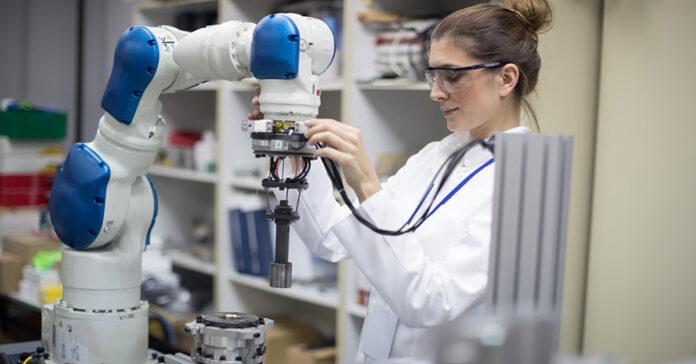Overview
Robotics has evolved from isolated, single-purpose machines to dynamic, distributed systems. Advances in AI, edge computing, and wireless communications have enabled swarm robotics—systems inspired by natural phenomena like ant colonies—and AI-powered fleet management. These developments promise increased flexibility, scalability, and resilience across industries such as logistics, agriculture, healthcare, and defense. However, challenges related to cybersecurity, privacy, and socio-economic impacts remain. This paper examines the underlying theories, technologies, and applications of these systems while addressing critical ethical and regulatory issues.
1. Introduction
Robotic systems are transitioning from rigid, centralized designs to interconnected networks of autonomous agents. Swarm robotics, modeled on natural systems, allows numerous simple robots to work collectively, offering robustness and adaptability. Simultaneously, AI-driven fleet management optimizes the coordination of diverse robotic assets, ensuring efficient resource allocation and real-time responsiveness. Together, these innovations are reshaping industrial operations and service delivery, though they also raise concerns regarding data security, workforce displacement, and legal liability.
2. Foundations and Technologies
Swarm Robotics:
Inspired by social insects, swarm robotics relies on decentralization, scalability, robustness, and emergent behavior. Early algorithms like particle swarm optimization and ant colony optimization laid the groundwork for modern decentralized systems. These systems use simple hardware and distributed software protocols to achieve complex tasks through local interactions and indirect communication.
AI-Driven Fleet Management:
Modern fleet management extends beyond traditional vehicle coordination to include autonomous guided vehicles and drones. Key elements include real-time data analytics, robust communication networks (using Wi-Fi, cellular, or mesh systems), dynamic task allocation through AI, and embedded safety protocols. This integration of global oversight with local decision-making enhances overall operational efficiency.
Enabling Technologies:
Advances in miniaturized hardware, edge AI, next-generation communication (5G/6G), and machine learning (including reinforcement learning and evolutionary algorithms) have made it feasible to deploy large, adaptable swarms. Additionally, blockchain and distributed ledgers are being explored to ensure data integrity and security in decentralized networks.
3. Applications and Challenges
Real-World Uses:
- Logistics: Automated warehouses and last-mile delivery systems benefit from decentralized control, increasing throughput and reducing energy consumption.
- Agriculture and Environment: Swarm robotics enhances precision farming, pest control, and environmental monitoring by efficiently covering large areas.
- Search and Rescue: Small, coordinated robots can navigate hazardous areas and locate survivors faster than traditional methods.
- Healthcare: Automated systems support hospital logistics and may one day enable targeted drug delivery through nanorobots.
- Defense: Coordinated unmanned systems offer enhanced surveillance and operational capabilities, though they raise ethical and legal debates.
Key Challenges:
Technical hurdles include battery limitations, communication bandwidth, and integration of heterogeneous systems. Cybersecurity threats and privacy issues are significant concerns, as are the ethical and socio-economic implications of job displacement and autonomous decision-making. Environmental considerations, such as energy consumption and e-waste, also demand attention.
4. Future Directions and Conclusion
Future research is focusing on hybrid control models that merge centralized oversight with decentralized autonomy, bio-inspired self-healing systems, and improved human-swarm interaction. Standardization and robust policy frameworks are essential to ensure safe, ethical, and effective deployment. Ultimately, the convergence of swarm robotics and intelligent fleet management holds transformative potential—but realizing this promise requires addressing technical, ethical, and regulatory challenges head-on.
In essence, the evolution of collaborative robotics is not just a question of technological capability, but also one of responsible development and governance.





